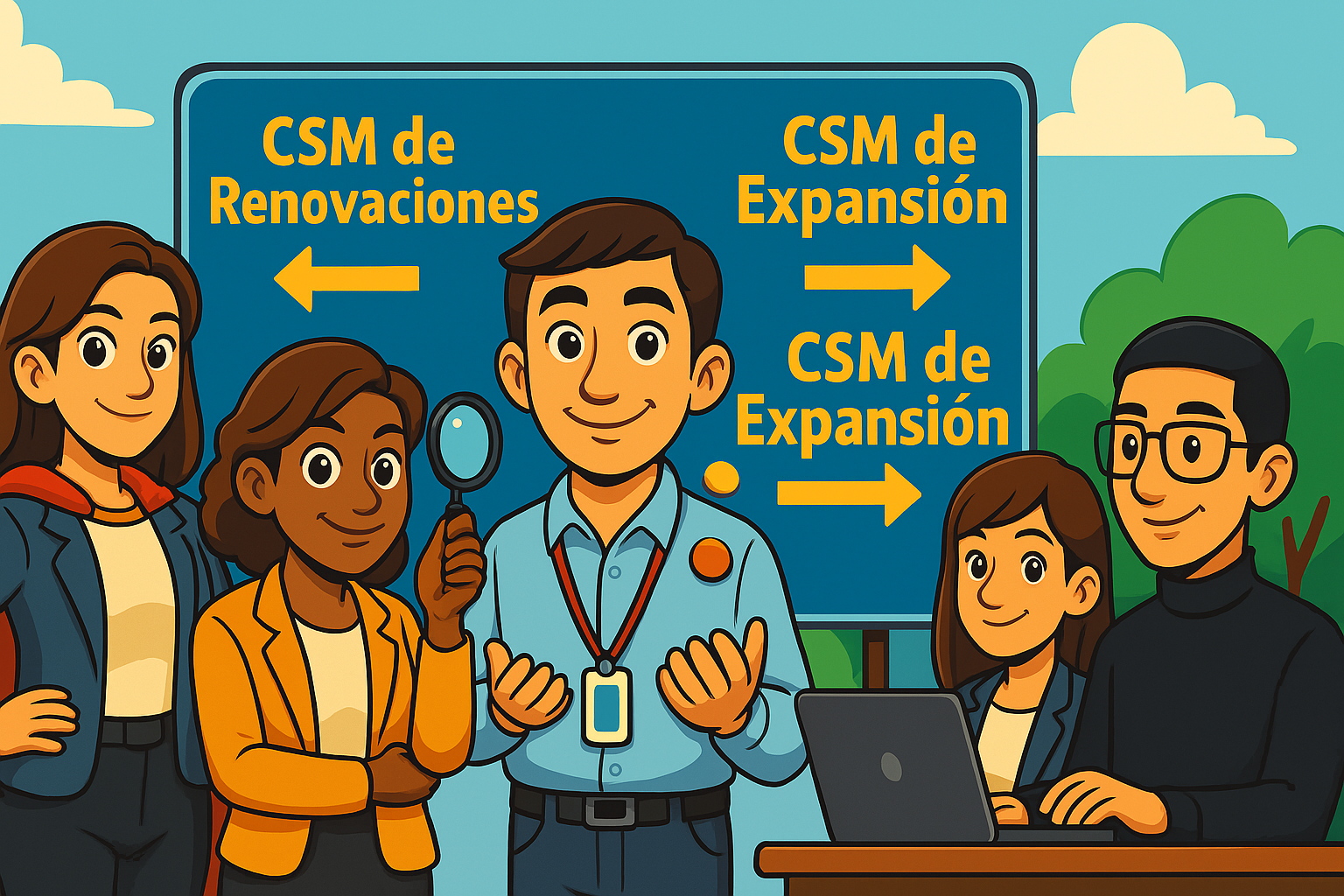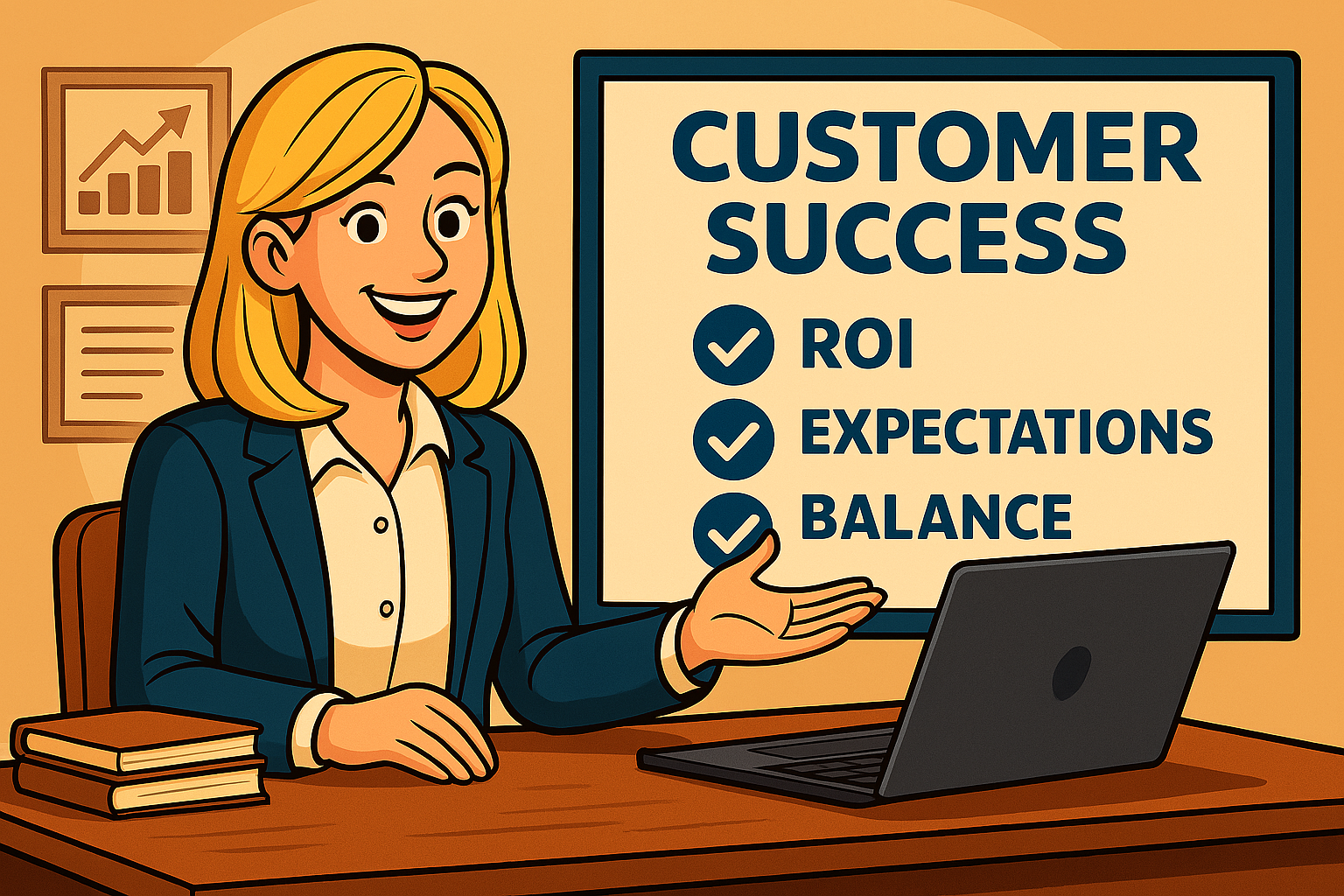
All in one profiles? The CSM everyone needs
The CSM is a role everyone needs, but few truly understand. And even if you’re not in CS — stick around, this post has valuable takeaways for you. 😉
Lately, I keep seeing posts and talks portraying the Customer Success Manager as a ‘do-it-all’ profile, someone who wears a different hat every week — or even every day:
🚀 Activation, 🤝 Relationships, 📊 Analytics, 🎯 Expansion, 🧠 Strategy, 💻 Support… and yes, 🫠 Emotional containment too.
But with all this talk…
Are CSMs actually being prepared for everything that’s expected of them?
Is it fair to expect them to perform from day one — without even a proper onboarding?
And in this demanding environment, without resources, focus or a plan… is burnout really that surprising?
So then,
❓How much ROI is there in truly investing in Customer Success?
❓Where is the balance between what the market needs and what a CSM can realistically deliver?
Spoiler: This is not a critique of the role — it’s an invitation to rethink how we support it, how we train it… and how we empower it.
🧢 If you’ve ever felt like you’re wearing too many hats as a CSM…
This post is for you. 🧢✨
🧮 The CSM earns a seat at the table: closer to revenue, not just support

Customer Success is no longer just tied to post-sales, support, relationship management, and satisfaction — now it also shares metrics with the CFO, the Sales team, and Product. Why? Because its impact on revenue is more visible… and more demanded.
🧢 So what’s being asked of the CSM now?
Grow accounts, retain clients, collaborate with Sales, master the product and the industry, analyze data, drive client impact, and act strategically.
💥 From day one? Sometimes, yes.
⚠️ With structure, focus, planning, and training? Not always.
Like it’s happened to me too, every CSM team or high-performing team has faced a common challenge: sky-high expectations, few tools, and little guidance. You’re expected to design strategy, onboard clients, analyze data, manage relationships… often without a proper team or defined processes. And don’t get me started on outdated, irrelevant documentation that doesn’t match your company’s workflow. Sound familiar? 😉
That experience leaves a mark.
And it teaches you something important:
You can’t expect a CSM to be a money machine without time, context, continuous learning, and focus to unlock their potential.
Revenue? Yes — but only after that.
🧢 The many “hats” of a Customer Success Manager

A CSM typically wears many hats within an organization, which is why we need to clearly define what’s expected, what their responsibilities are, how they should carry them out, and provide them with tools and training to succeed. Especially because these profiles often come from very diverse backgrounds, making it hard to find the exact mix of “hats” that fits your company perfectly.
So, what if we focused on attitude and potential, trained them internally, and shaped their path? This would lead to faster results, more focus, increased recognition and support, stronger commitment to the company, and lower turnover — especially when they have deep product knowledge.
Here’s a quick list I’ve put together of the most common “hats” CSMs wear and the tools they typically use in each role.
👣 Specialization: Choose Your Path
Today, CSMs are still in demand… but not just any CSM.
The role has evolved rapidly, and its popularity is booming.
Right now, in many job descriptions, we keep seeing the same patterns repeated — whether due to a lack of understanding of what a CSM can really bring, or because of the company or product’s maturity level. But if we dig a bit deeper, we can see a clear sign of market maturity, and that’s where the real challenge begins: standing out and staying competitive.
This is where specialization enters the picture.
Although we’re already seeing the emergence of new roles, in the coming months their real scope and structure will become much more defined.
🧭 Most Common Specializations

Even when the role becomes specialized, we must not forget that the ultimate goal remains the same: driving expansion, cross-sell, and renewals — often in collaboration with, or even partially replacing, the sales team.
As this role matures, metrics like Net Revenue Retention (NRR) and Customer Lifetime Value (CLV) will (if they haven’t already) become essential for every company.
🧑💼 Profiles:
🦸🏽♀️ Renewals CSM
- What they do: Manages contracts to ensure continuity and retention. This role often includes administrative workload and requires strong negotiation skills.
🕵🏽♀️ Expansion CSM
- What they do: Identifies cross-sell and upsell opportunities within the active client base. This role is closely tied to renewals and requires storytelling abilities. A useful resource: Cross-selling and Upselling Course – HubSpot
🤹🏽 Product CSM
- What they do: Acts as a liaison between the client and the product team, translating real needs. Should be familiar with agile methodologies, product management, and project workflows.
👨🏼💻 Technical CSM
- What they do: Manages technical elements, complex configurations, or custom integrations. Requires technical skills and data fluency.
👩🏻💼 Onboarding CSM
- What they do: Specializes in activating and onboarding new clients. This profile must understand the client’s goals and help align them. Active listening and strong communication skills are key.
🥷🏻 Digital CSM
- What they do: Manages large volumes of accounts using automation, tech-touch strategies, and data analytics.
🚀 New Career Paths from the CSM Role
We’ve already talked about the current specializations in the market, but does the CSM role offer real career growth within the organization? Absolutely.
Today’s CSM has a wide range of opportunities and can grow into roles such as:
| 🎯 Role | 📌 Responsibility | 🛠️ Key Skillset |
|---|---|---|
| 🔝 Head of CS | Leads the CS team, defines strategy and processes. | Strategic vision, KPI ownership |
| 📈 Revenue Operations (RevOps) | Optimizes and automates processes and revenue streams. | CRM expertise, automation, customer journey |
| 📊 Customer Insights Manager | Turns data into business insights. Adds value to Product and Marketing. | Data analysis, storytelling, reporting |
| 🧑💼 Chief Customer Officer (CCO) | Represents the customer at the executive level. Leads the global strategy. | Executive leadership, stakeholder management, strategic thinking |
As we’ve already mentioned, this role is evolving rapidly — these are just some examples.
I’m confident that in the near future, more paths will be defined… and even new ones created.
✨ Answering the Big Questions

👉 How much ROI is there in truly investing in Customer Success? A lot… if done right.
Investing in Customer Success is not a cost — it’s a growth lever. But like any strategy, ROI depends on the type of investment you make.
Real example:
A single CS team member in a B2B SaaS company can double NRR in 6–12 months if they are given:
- Time to understand the customer
- Ongoing training
- The right tools
- Focus on expansion and value
Tangible ROI? Less churn, more expansion, higher adoption, fewer support tickets, better product insights.
👉 Where is the balance between what the market needs and what a CSM can (realistically) deliver?
It lies in aligning expectations with context.
The market asks a lot from CSMs — but they’re not magical Swiss Army knives.
Can they become one? Yes.
But only with time, onboarding, tools, mentoring, and focus.
To get there: define the role scope clearly from the start, support their development, measure impact gradually (not from day 1), and create an environment where they can grow without always firefighting.
Because if we don’t take care of them, we burn them out. And a burned-out CSM doesn’t deliver ROI — they quit.
💡 If you’ve read this far, it’s because you know something has to change.
📢 Share this article with your team, your manager, or that colleague giving 200% without a manual or clear plan.
And if you lead a CS team…
ask yourself not only how much your team can deliver,
but how much you’re doing to enable them to deliver it.
See you around.
And remember:
this isn’t just a trend — it’s a strategy. One that needs head, heart… and a plan.
🚀 What are you doing today to prepare for the CS of tomorrow? 🚀